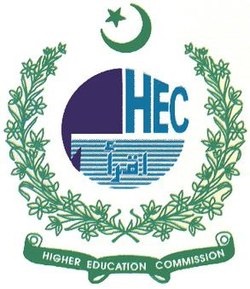Political Comics: An Emerging Trend in Social Media and Its Impact on Youth
DOI:
https://doi.org/10.61506/01.00045Keywords:
Social Media, Political Comics, Impact, YouthAbstract
Youth of today is greatly influenced by different social media platforms e.g., Facebook, Instagram, Twitter or X etc. These social media platforms offer them enormous opportunities to explore and learn new concepts and practices. This research aimed to study the emerging trend of political comics on different social media platforms and how it impacts the youth in Pakistan. This study is composed of survey analysis. This study was survey research, in which a close-ended questionnaire was used to collect the data from a sample of 120 undergraduate students of Lahore district including an equal number of male and female. The study explored that political comics have some hidden meanings that have strong psychological impacts on young social media users. T-test analysis shows that political comics have both positive and negative impacts. This research concludes that nationalism and trust on state machinery is strongly damaged if its political leaders have a negative image among youth. This may lead to more political polarization among youth. This study also explores that social media plays a healthy role in political awareness with a strong and extensive impact.
References
Akram, W. (2018). A study on positive and negative effects of social media on society, International Journal Of Computer Sciences And Engineering, 5(10), 347-354. DOI: https://doi.org/10.26438/ijcse/v5i10.351354
Ashfaq ,A.. & Hussein, A. (2013) Political Cartoonists versus Readers: Role of political cartoonists in Building Public Opinion and Readers’ Expectations towards Print Media Cartoons in Pakistan. (2013). Mediterranean Journal of Social Sciences,4(3), 65. DOI: https://doi.org/10.5901/mjss.2013.v4n3p265
Brantner, C. & Lobinger, K. (2011). Effects of visual framing on emotional responses and evaluations of news stories about the Gaza conflict, Journalism & Mass Communication Quarterly, 88(3), 523-540 DOI: https://doi.org/10.1177/107769901108800304
Chenn, K., W., Phiddian, R. & Stewart, R. (2017). Towards a discipline of political cartoon studies: mapping the field, Satire and Politics (pp.125-162) DOI: https://doi.org/10.1007/978-3-319-56774-7_5
Edwards, J. L., & McDonald, C. A. (2010). Reading Hillary and Sarah: Contradictions of feminism and representation in 2008 campaign political cartoons. American Behavioral Scientist, 54(3), 313-329. DOI: https://doi.org/10.1177/0002764210381704
EIjaz, A. (2013). Impact of New Media on Dynamics of Pakistan Politics. Journal of Political Studies, 20, 113-130.
Institute for Strategic Studies, Research and Analysis (2022), Retrieved from https://ndu.edu.pk/issra/insights/Youth-Bulge-and-its-Implication-on-the-National-Security-of-Pakistan.pdf>
Knieper, T. (2023, June 9). political cartoon. Encyclopedia Britannica. https://www.britannica.com/topic/political-cartoon
Lawate, L., M. (2012). Importance of political cartoons to newspapers. A Dissertation. Department of Media Studies, Christ University, Bangalore.
Leon, L. (2017). The evolution of political cartooning in the New Media Age: Cases from Australia, the USA and the UK. Satire and Politics: the Interplay of Heritage and Practice, 163-191. DOI: https://doi.org/10.1007/978-3-319-56774-7_6
McKibben, Bill (1992). The Age of Missing Information. Random House.
Nieland, U. (2008). Politainment. En: W. Donsbach (Ed.), The International Encyclopedia of Communication. Blackwell Publishing. Blackwell Reference Online. DOI: https://doi.org/10.1002/9781405186407.wbiecp047
Sani, I., Abdullah, M.H., Abdullah, F.S., & Ali, A.M. (2012). Political Cartoons as a Vehicle of Setting Social Agenda: The Newspaper Example. Asian Social Science, 8, 156. DOI: https://doi.org/10.5539/ass.v8n6p156
Schwarz, N., Groves, R. M., & Schuman, H. (1998). Survey methods. The handbook of social psychology, 1, 143-179.
Settle, Q. (2018). Introducing Communication Theory: Analysis and Application. Journal of Applied Communications, 102 (3). DOI: https://doi.org/10.4148/1051-0834.1223
Walker, R. (2003). Political cartoons: Now you see them. Canadian parliamentary review, 26(1), 16-21.
Worcester, K. (2017). International Political Science Review / Revue internationale de science politique, 38(5), pp. 690-700 Sage Publications, Ltd. DOI: https://doi.org/10.1177/0192512116667631


